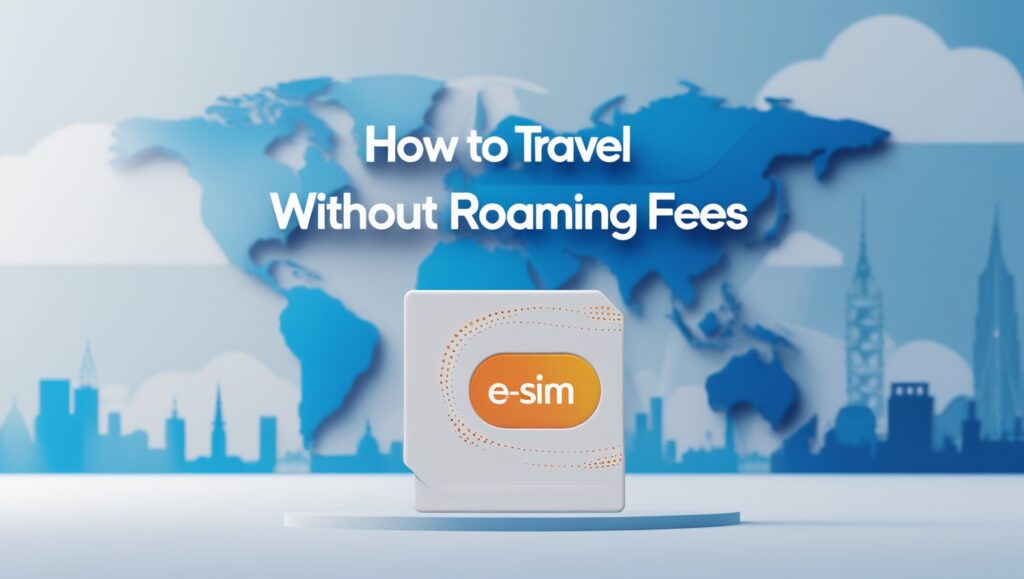No products in the cart.
Uncategorized
How to Travel Without Roaming Fees
Roaming fees…
They’re domestic carriers’ favorite secret weapon. Use your phone abroad, and you risk getting hit with exorbitant rates no matter how careful you think you’re being.
Most travelers have encountered a phone bill that’s unpleasantly a few hundred dollars more than expected. And we’ve all heard the horror stories of unexpected roaming charges.
Fortunately, there are several steps you can take to save on roaming fees during travel.
Whether you’re going abroad for an extended period or hopping over the border for the weekend to see your family, here are four strategies to make sure you don’t return to a surprise phone bill.
Four Strategies to Save on Roaming Fees While Traveling
Don’t expect to complain a bill away if you forget to turn off your data before you take off on your trip.
If you’re headed abroad, there are several routes to take that will help you save on roaming fees during travel. There’s no one right approach, so here are four strategies to consider. Each has its advantages, so think carefully about what your next trip will entail.
1. Check With Your Carrier Ahead of Time
Before you head out, check with your carrier regarding your options for international data. Some carriers offer free international data. These often aren’t the cheapest phone plans, but they may be worth it if you’re always on the go.
Likewise, other carriers will offer free international data for certain countries, or free data globally … at 2G speeds. If this is acceptable to you, it may be something to consider.
Finally, others may offer data plans for short periods. The rates may vary by country, region, or duration, so be sure to ask as many questions as possible.
2. Rely on Local Wi-Fi
Many travelers opt to forego data altogether, relying on Wi-Fi hotspots in the area. This is an age-old economical trick that works quite well in many urban areas. However, it may be harder to pull it off in rural or remote places.
The trick to relying on local Wi-Fi is to thoroughly disable your data. That means turning off data in the settings. Do not rely on airplane mode, as background services using data may still run.
To be extra safe, many people take their SIM cards out of their phones. You’ll need a safe place to stash it.
Without data, your phone will still work fine on Wi-Fi. Plus, emergency services will remain active. You’ll also be able to use GPS if you’ve downloaded local maps from Google Maps. Take advantage of this because it will help you get around. After that:
- Look for coffee shops that advertise free Wi-Fi.
- See if you can access free Wi-Fi at public libraries or other municipal buildings.
- Consider getting a coworking membership if you’re a freelancer.
- Be careful about accessing sketchy-looking Wi-Fi networks, especially open networks in odd areas.
3. Get a Local SIM Card
Local SIM cards are another trick that many experienced travelers use while abroad. Pick up a SIM card at your destination and pop it into your phone. You’ll get a local number as well as access to data on local networks. When done correctly, this can be a cheap, easy method for staying connected during your trip.
Of course, if that sounds too easy or good to be true, that’s because it sometimes is. While you’ll buy a local SIM card without a hitch most of the time, it’s easier for things to go wrong around purchases like this. For example:
- You may buy a SIM card that doesn’t provide what’s advertised.
- You may be overcharged.
- You may inadvertently buy the wrong type of card for your phone.
These problems are even more likely to occur when there’s a language barrier or when you buy from an unauthorized dealer.
4. Get an eSIM
Finally, do you have an eSIM-capable device?
eSIM stands for embedded SIM card. It’s a tiny chip that’s soldered to your phone’s circuitry. To use it, you’ll download a data pack from a provider or marketplace. Once it is activated, you’ll have instant data and connectivity.
There are a lot of benefits to using an eSIM, including how quick and convenient it is. Similarly, you can download multiple data packs and switch between them as needed while you move. Since most marketplaces partner with carriers, you’ll also access data plans at local prices, which makes using an eSIM a cost-effective option.
Another neat thing about using an eSIM is that many phones can use Dual SIM with it. This means you won’t take your domestic SIM card out of your phone. Rather, you’ll simply turn off the data for that SIM card, then continue using voice and text normally while using the data pack on your eSIM. Since carriers often readily offer cheap international texting and calling, this is a great way to save on roaming fees during travel. Plus, you may need to use your usual number for authentications.
Save on Roaming Fees While Traveling with Airalo
Roaming fees might be insanely expensive, but you don’t have to shell out for them every single time you travel. We’ve covered a few strategies that you can deploy to save on roaming fees during travel and still maintain the level of connectivity that you need while you’re abroad.
From relying on Wi-Fi hotspots to snagging an eSIM or three, there are as many ways to handle connectivity as there are to travel abroad. Don’t get roped into some expensive data plan or spend your vacation worrying about what the phone bill will look like when you get home. Instead, use one or all of these travel hacks and get back to enjoying the adventure.
Check out the Airalo marketplace now to discover the most affordable eSIM plans.

